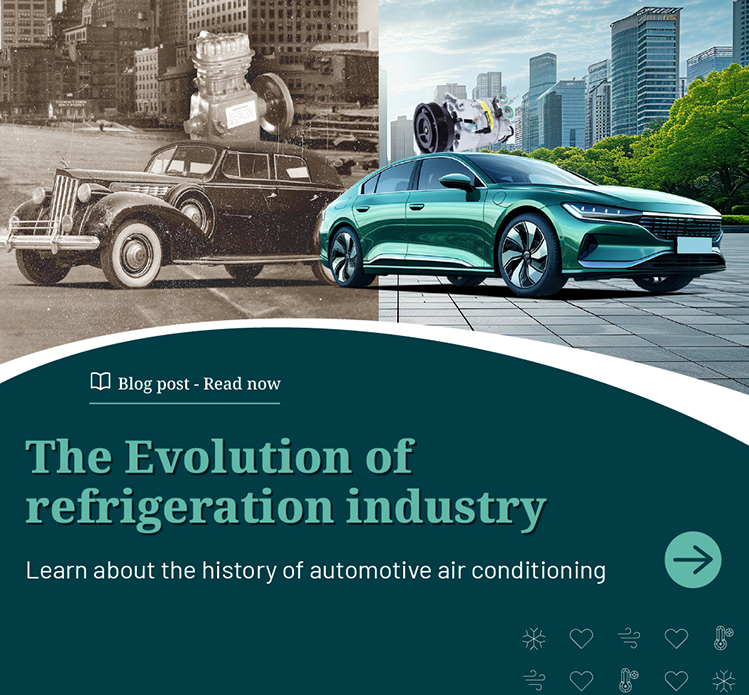The evolution of vehicle air conditioning industry

The evolution of vehicle air conditioning: from heavy, polluting units to light, environmentally friendly ones
Car air conditioning has undergone major changes. Here, you will learn a little about the history and development of this essential device.
Air conditioning was first introduced in the 1930s and has since become a standard feature in most cars. At this time, manufacturers began experimenting with ways of cooling car interiors.
The Packard Motor Company was the first car manufacturer to introduce air conditioning units in its cars in 1939. These units were manufactured by Bishop and Babcock (B&B) of Cleveland, Ohio, and were installed in around 2,000 vehicles. The system consisted of an evaporator, a compressor, a condenser, and an expansion valve.
The evaporator was inside the car, while the condenser was mounted outside. The car's engine drove the compressor, and the expansion valve regulated the flow of refrigerant gas through the system, which captured the hot air from outside, passed it through the evaporator, which cooled and dehumidified the air, and then blew the cooled air into the car.
Over time, there were some complaints. For example, the main evaporator and inflation system took up half the space in the trunk.
Over time, more efficient air conditioning systems emerged, especially in the post-war years, which made the Packard system less attractive to car buyers.
Another problem with the Packard system was its lack of a temperature thermostat or shut-off mechanism. So, in addition to turning off the fan, it also allowed cold air to enter the car while it was moving. The high price was another factor that bothered buyers. So, in 1941, the option was discontinued.
In the 1940s and 1950s, car air conditioning systems became more common but were still considered a luxury. In addition, the first systems also consumed a lot of energy and were not very efficient.
In the 1960s, car air conditioning systems became more compact, efficient, and economical. One of the main innovations of this era was the introduction of the hermetically sealed compressor, which was smaller and more efficient than previous models and didn't require as much maintenance.
Another innovation of the 1960s was the introduction of the first fully automatic air conditioning system. This system used sensors to monitor the temperature and humidity inside the car and automatically adjusted the temperature and fan speed to maintain a comfortable environment.
In the 1970s and 1980s, car air conditioning systems continued to evolve. They became even more efficient and more environmentally friendly. In the 1990s, car manufacturers began using new refrigerants, such as R-134a, which are less environmentally harmful.
One of the main developments of the 1970s was the introduction of the "cyclonic clutch" compressor. This type of compressor only worked when needed, which helped reduce energy consumption and improve the air conditioning system's efficiency.
In the 1980s, car manufacturers began using more advanced electronic controls for the air conditioning system. These controls allowed for more precise temperature and humidity control and better energy efficiency.
In the 1990s and 2000s, car air conditioning systems became more compact, lighter, more efficient, and more integrated into the car's overall design.
Another innovation of the 2000s was the automatic adjustment of temperature and fan speed for optimum comfort and energy efficiency.
The future is now
The future of car air conditioning will likely be driven by several trends, such as the growing attention paid to environmental sustainability. Car manufacturers will likely continue to develop air conditioning systems that are more energy efficient and use more environmentally friendly refrigerants and components.
Conclusion
The history of automotive air conditioning is one of invention, development, and evolution. It has evolved from the bulky and expensive systems of the 1930s to today's compact, efficient, and environmentally friendly systems. It's been a long road that has changed for the better.
Timeline of Air Conditioning Evolution
 |
 |
 |
|
 |
 |
 |
No comments






0 comments